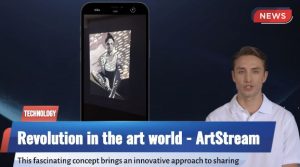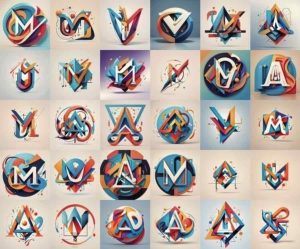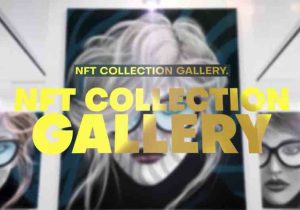Revolutionizing Art Ownership

Ewa Krzywińska’s NFT Venture in “Angels Always Come As Two
In the evolving landscape of art and technology, a compelling synergy is emerging, where digital innovations breathe new life into traditional art forms. A striking example of this is Ewa Krzywińska’s latest artwork, “Angels Always Come As Two”, which ingeniously blends the timeless allure of oil painting with the cutting-edge realm of Non-Fungible Tokens (NFTs). This article delves into how Krzywińska’s approach not only challenges conventional art sales but also enhances the collectors’ experience in the digital age.
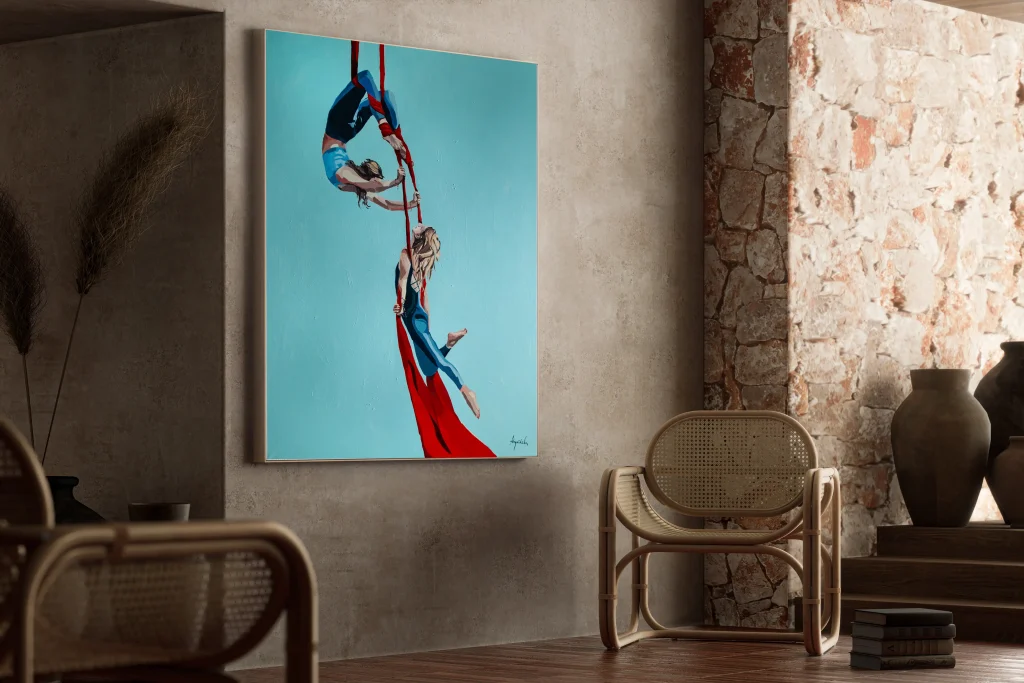
Art Meets Innovation: The Genesis of a Modern Masterpiece
“Angels Always Come As Two” is a mesmerizing oil on canvas featuring two women engaged in aerial acrobatics, their forms gracefully contorted against a placid blue backdrop. The painting reflects a profound appreciation for the human form and the expressive potential of body movement, rendered in softened colors that suggest a sort of ethereal presence. The artwork is executed with smooth, long brushstrokes and meticulous attention to detail, hallmarks of Krzywińska’s commitment to quality and artistic integrity.
Breaking Traditional Boundaries: NFTs and Art Collecting
However, what sets this piece apart is its transformation into an NFT, segmented into four distinct parts. This innovative sales approach not only democratizes ownership but also introduces a novel interactive dimension to the art collection. By purchasing a segment, collectors gain a stake in a shared masterwork, and through an interactive platform, they can trade pieces with others, potentially reassembling the complete image in different collections over time.
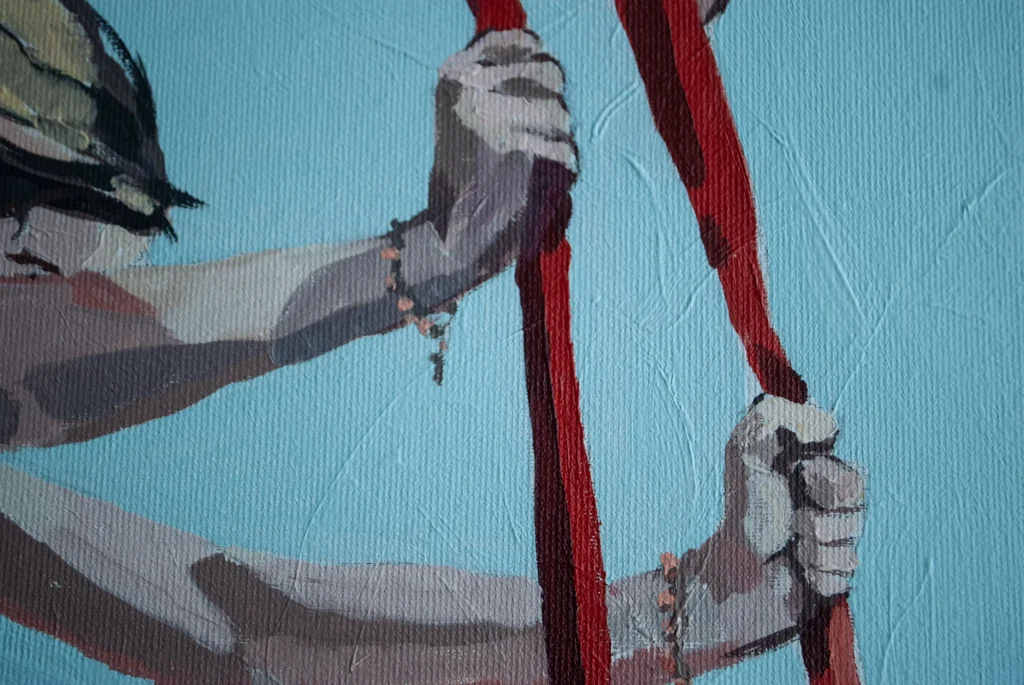
This method of art distribution leverages the blockchain’s transparency and security, ensuring the authenticity and exclusive ownership of each digital piece. Each segment of “Angels Always Come As Two” is accompanied by an Author’s Certificate of Authenticity, and the artist’s signature is replicated on the digital file, preserving the personal touch that is often lost in digital transactions.
The Gamification of Art Collection
The decision to sell the painting as an NFT also taps into a broader trend of using technology to unlock new value in art. NFTs create scarcity and uniqueness in the digital realm, traits that are inherently appealing to collectors and investors. Furthermore, Krzywińska’s choice to incorporate a lottery system as part of the purchasing process adds an element of gamification, enhancing engagement and making the acquisition process itself a thrilling part of the collector’s experience.

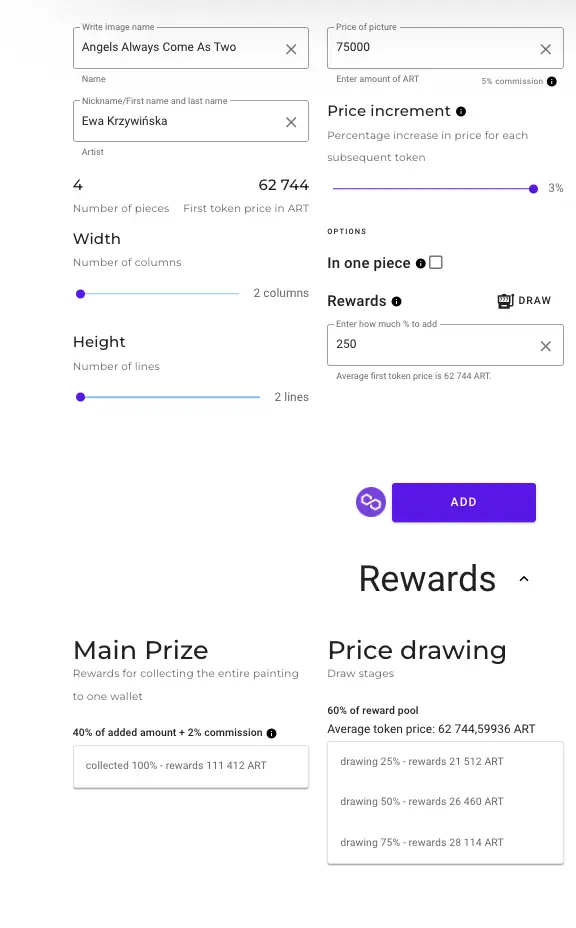
Future Implications: Artists, Collectors, and the Digital Shift
The implications of this approach are profound. For artists, it offers a new avenue for monetization and audience engagement, breaking away from the traditional gallery system that often dominates sales and exposure. For collectors, it provides a dynamic way to interact with art, far beyond passive viewing. The ability to trade and reassemble parts of the painting introduces a communal aspect to art collection, fostering a community of enthusiasts and collectors who are invested not just in the art but in the ecosystem it inhabits.
Critically, while the digital format offers numerous advantages, it also poses challenges, particularly in terms of the perception of digital art as ‘authentic’ or ‘valuable’ compared to traditional art. However, by maintaining the traditional aspects of art creation—such as oil painting on canvas—Krzywińska bridges the gap between old and new, making the digital pieces feel more tangible and connected to classical art practices.
In conclusion, Ewa Krzywińska’s “Angels Always Come As Two” represents a significant step forward in the intersection of art and technology. By reimagining ownership and participation in art collecting, Krzywińska not only challenges traditional paradigms but also enhances the cultural value of art in the digital age. As this trend continues to evolve, it will be fascinating to watch how other artists and collectors adapt to and expand upon these innovations.
